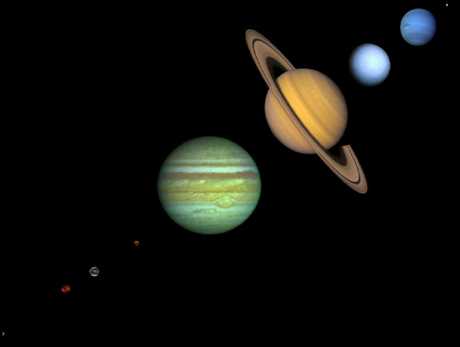 Astronomy of the Ancients
Astronomy of the Ancients
This is the study of the astronomy of ancient peoples through archaeological remains. A good example is Stonehenge in Salisbury Plain, southern England. Stonehenge was built in period from 3000-1800 BC. In addition to the stones which are now famous and added late, there was a large circular ditch about 100meters in diameter with a long avenue leading toward the northeast. A massive stone called the HEELSTONE stands right outside the avenue opening. Seen from the center of the ditch, the summer solstice rises from behind the Heelstone. Other lines associated with Stonehenge stones point toward the most northerly and southerly rising of the moon.
North American Indians also have many seemingly astronomical time keeping structures. The Big Horn Medicine Wheel in Wyoming was used from around 1500 for 200 years. It is suspected that it was designed from time planning of hunting, harvesting etc. Such structures were likely necessary for efficient subsistence and survival, and societal planning. There are about 40 such structures known dating back to cultures of 100AD in the region of North America.
Central and south America also shows evidence for primitive astronomy. Mayan and Aztec empires build many structures and temples with window alignments to solstice risings, and the rising of Venus.
Temples in Southeast Asia have also shown astronomical alignments.
There are also artifacts such as bones with astronomical inscriptions documenting the phases of the moon. This has been found on ivory Wooly Mammoth tusks from 27,000 years ago.
Many of these early societies did not have written languages or the written evidence was burned. Mayan manuscripts of 1000 years ago were burned by Spanish missionaries who thought that books were evil. Apparently only 4 books have survived, and all have astronomical references.
The absence of a written records is why astronomical history often focuses on the Greeks.
Early Greek astronomy, before 600 BC was first based on Babylonian and Egyptian astronomy. These were influenced by religion and were mainly dedicated to religious purposes. However the entrance of Thales of Miletus (624-547 BC) believed the universe was rational and that many of the "the mysteries of the universe are unknown but not unknowable." This was a sharply contrasting view to those of previous cultures.
Pythagoras (570-500 BC), along the same vein, proposed that nature was somehow operating under mathematical (or musical) principles. "Music of the Spheres" was a description of astronomical motions. Pythagoras also, however, thought that heavenly bodies are divine, and were all perfect spheres moving in perfect circles. While he and his students tried to formulate mathematical models to support this, the underlying directions were still often religiously motivated.
In general however, Thales and Pythagoras are important because they invoked a different kind of rational thought into the view of the universe at the time. Anaximander (611-546 BC) followed with geometric interpretations of the rising sun and moon, though the specific interpretation of spinning wagon wheels with burning flames seems far fetched.
Religious and philosophical influences are still strongly evident in Plato's (428-347 BC) views that a circle is the most perfect form. Plato was not a scientist, nor was Aristotle, who was influenced by Plato as we shall see.